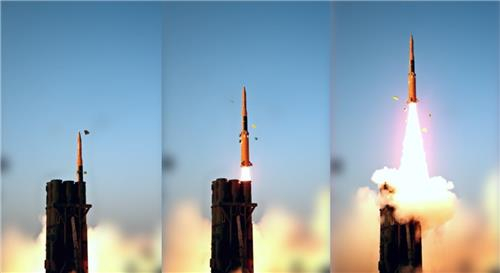The L-SAM is expected to enhance the country’s air defense capabilities against North Korea’s nuclear and missile threats.
In development since 2015 with an investment of 1.2 trillion won ($860 million), the L-SAM is designed to intercept incoming missiles at altitudes of 40 kilometers (24.8 miles) or higher. Its primary goal is to neutralize threats during the terminal phase, as missiles re-enter the atmosphere, minimizing ground-level damage.
A ceremony marking the completion of the decade-long project was held on November 29 at the Agency for Defense Development (ADD) in Daejeon.

“Even if North Korea attempts a missile provocation, it cannot penetrate our military’s sturdy defense system,” Defense Minister Kim Yong-hyun said at the event. “Such actions will only result in a heavier price than what it gains from provocation, leading to the end of its regime.”
The L-SAM strengthens South Korea’s multilayered missile defense system by providing a higher-altitude interception capability than existing systems, such as the U.S.-made Patriot Advanced Capability-3 (PAC-3) and the domestically developed M-SAM II. These systems target threats at altitudes below 40 kilometers, while the L-SAM focuses on engaging missiles in the upper tier of the terminal phase.
By engaging threats at higher altitudes, the L-SAM aims to neutralize North Korea’s nuclear and missile capabilities early, reducing the potential for ground-level damage.
The L-SAM employs the “hit-to-kill” interception method, directly striking incoming missiles traveling at high speeds and low air densities in the upper atmosphere using precise adjustments in position and attitude. Such high-precision guidance technology was developed entirely through domestic means, the ministry said.
With development complete, South Korea is set to begin production of the L-SAM next year. The system is expected to be operational in the mid-to-late 2020s.
Once deployed, the L-SAM is expected to play a central role in the country’s multilayered missile defense shield, called the Korea Air and Missile Defense (KAMD).
KAMD is a key component of the country’s three-axis deterrence structure, which also includes the Kill Chain pre-emptive strike platform and the Korea Massive Punishment and Retaliation (KMPR) system.
“KAMD is a system that defends our territory, while the other two systems are more focused on the offensive,” a ministry official said. “The development of the L-SAM is significant as it provides another opportunity for interception at a higher altitude, enhancing the defense of our territory.”
The military is currently developing a Block-II version of the L-SAM, designed to intercept targets at even higher altitudes than the current version.
BY SEO JI-EUN [seo.jieun1@joongang.co.kr]

![Ex-South Korean President Accused of Trying to Trigger North Korean Attack Former President Yoon Suk Yeol leaves the Seoul Central District Court in southern Seoul after the pretrial detention hearing on July 9. [JOINT PRESS CORPS]](https://www.koreadailyus.com/wp-content/uploads/2025/07/0710-Yoon-100x70.jpg)


